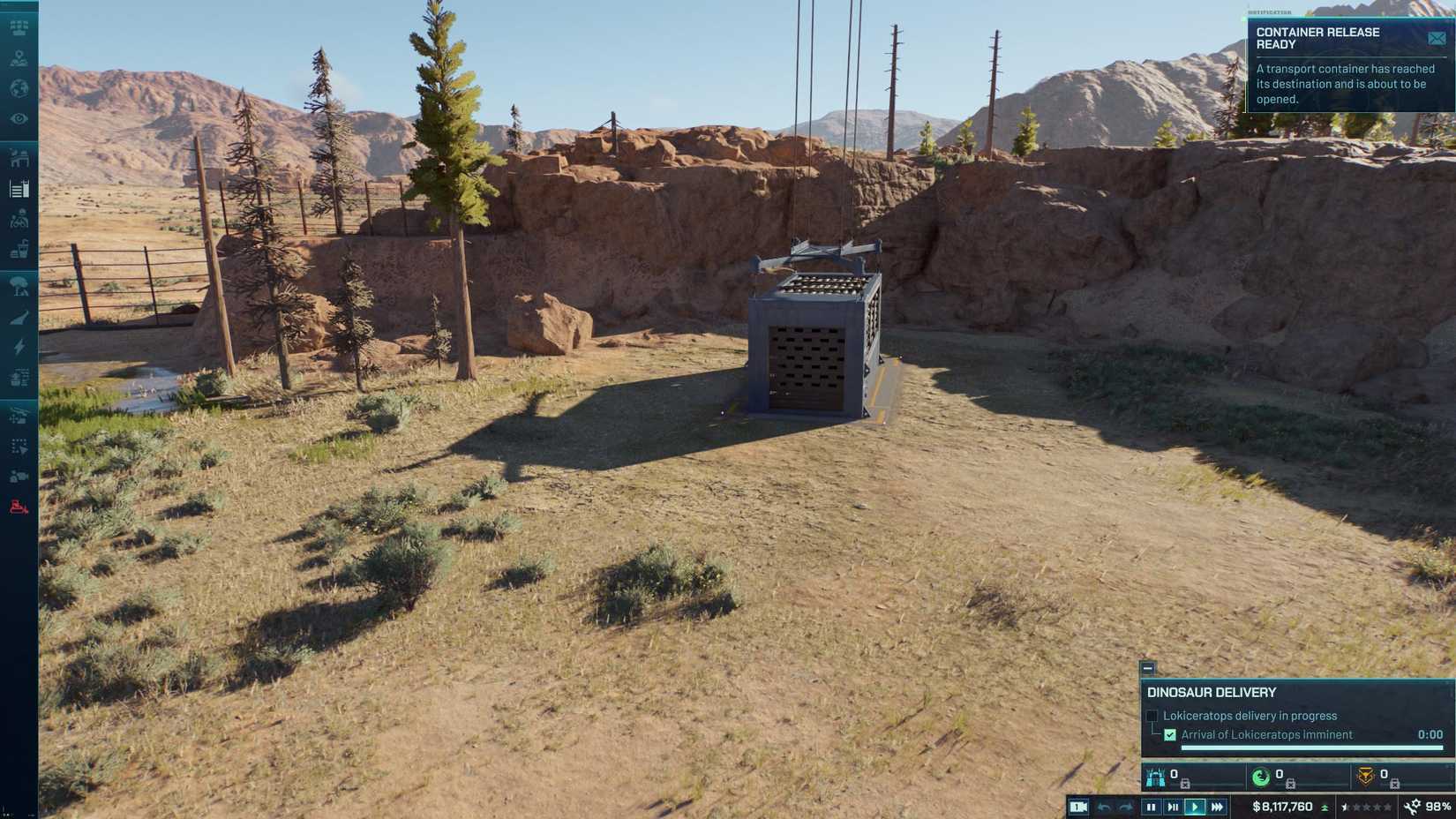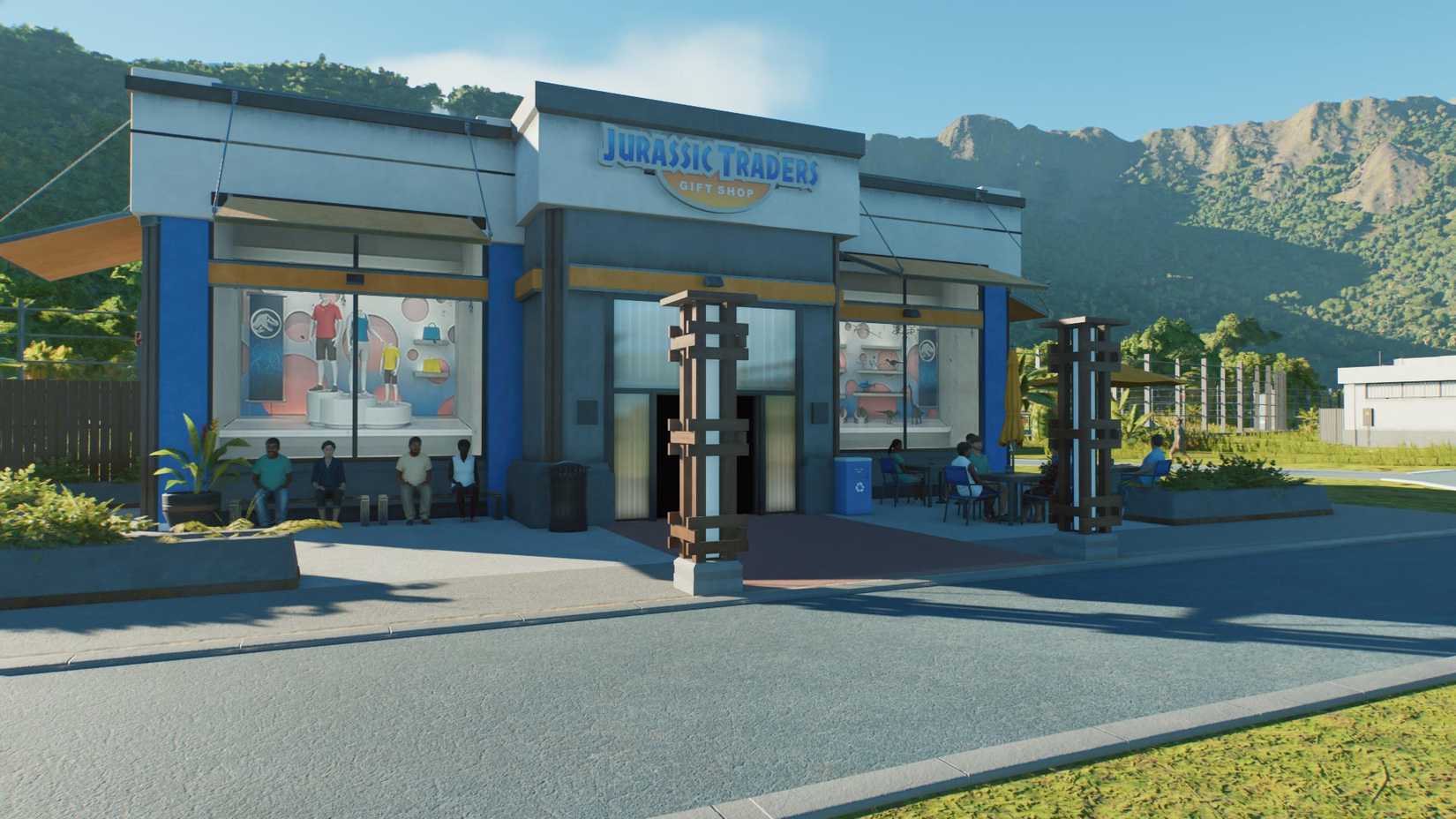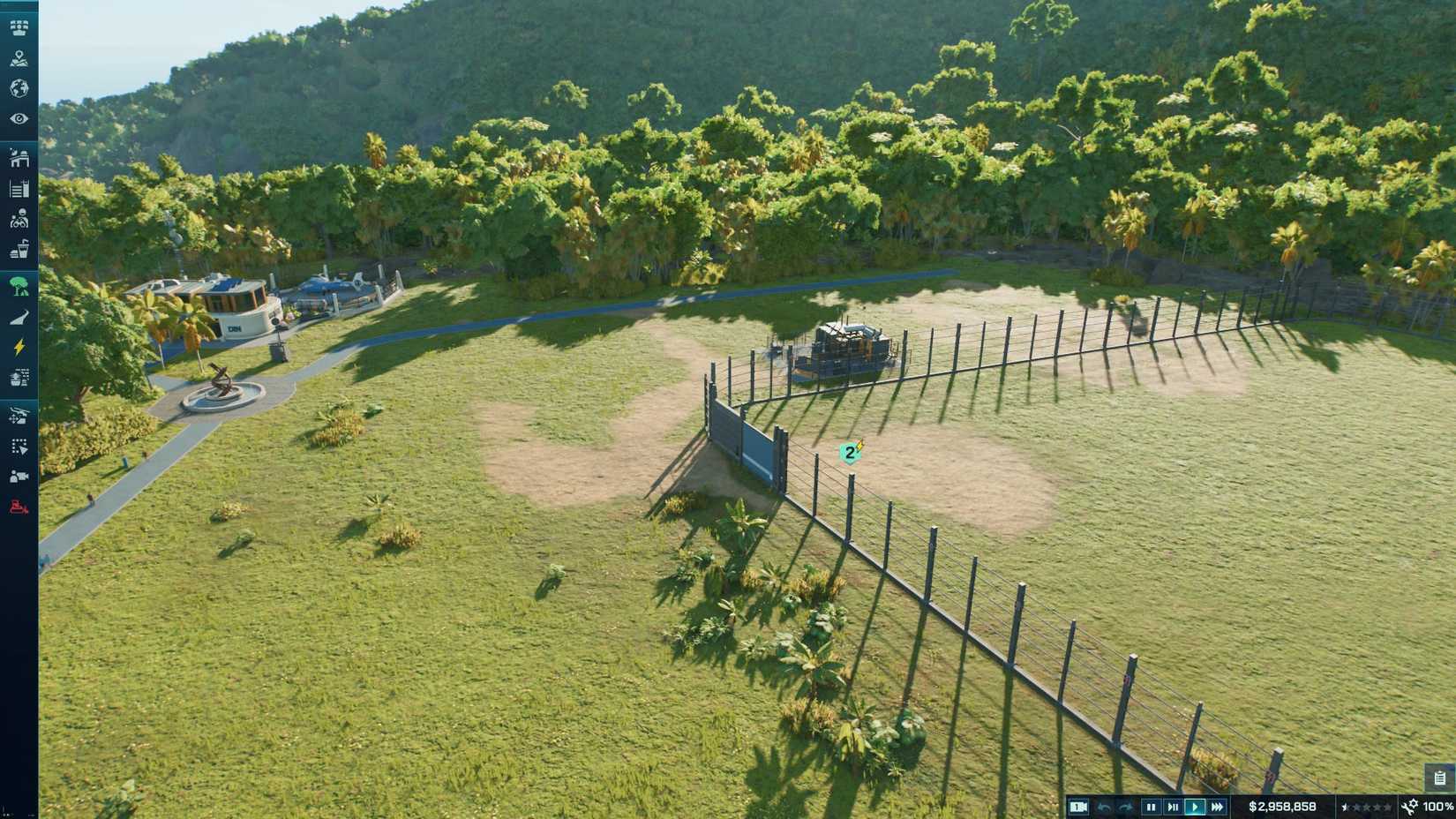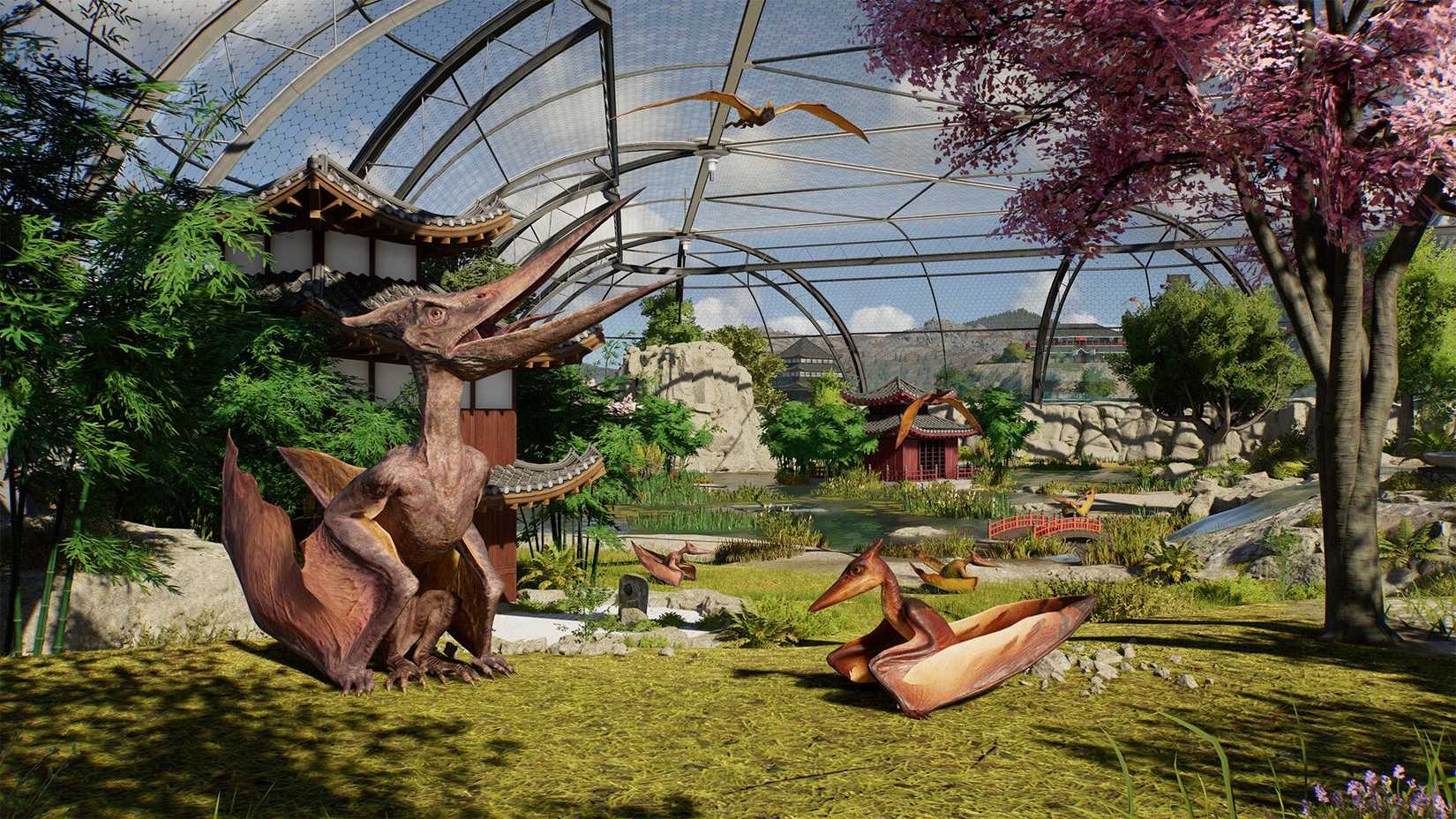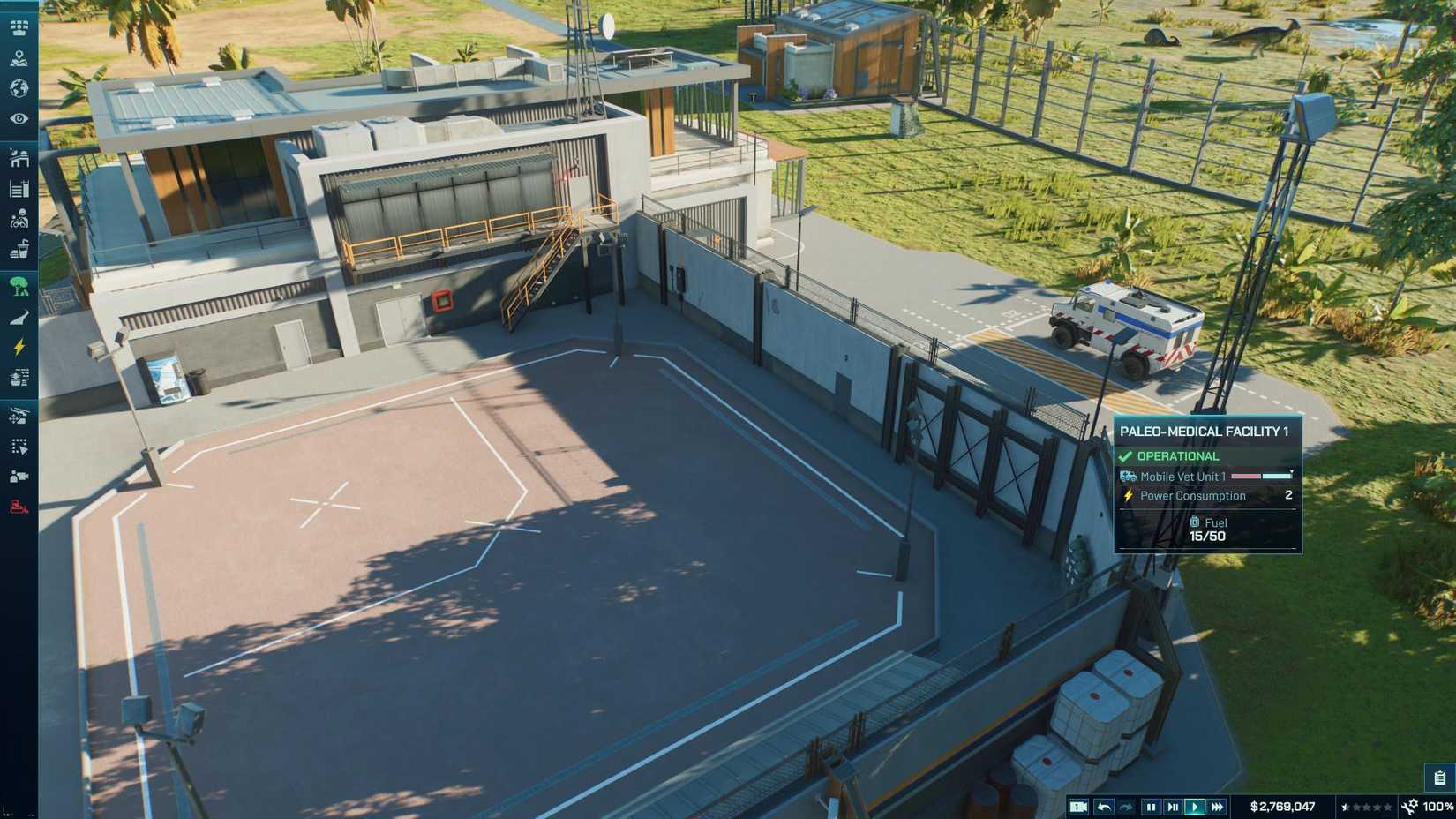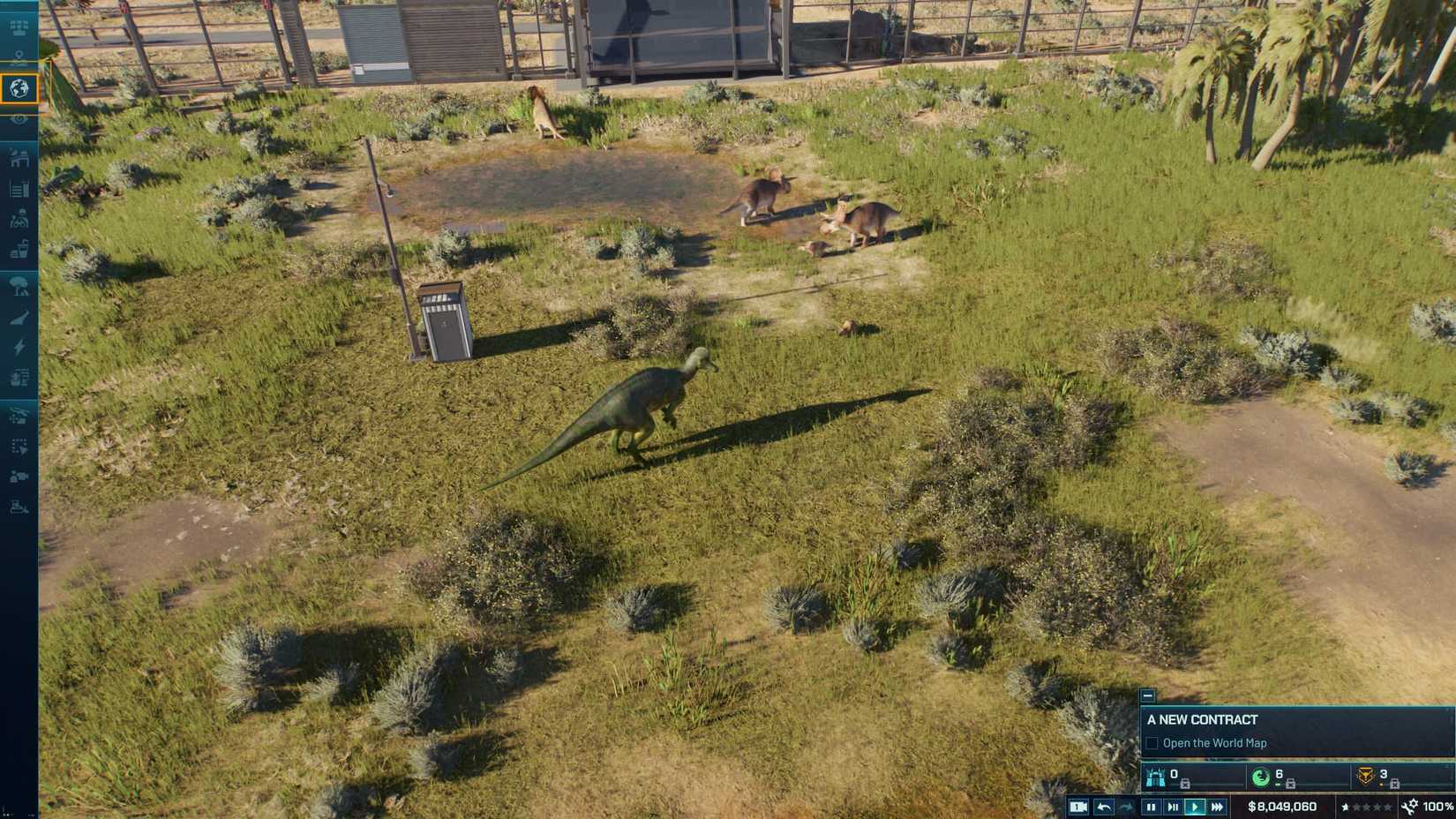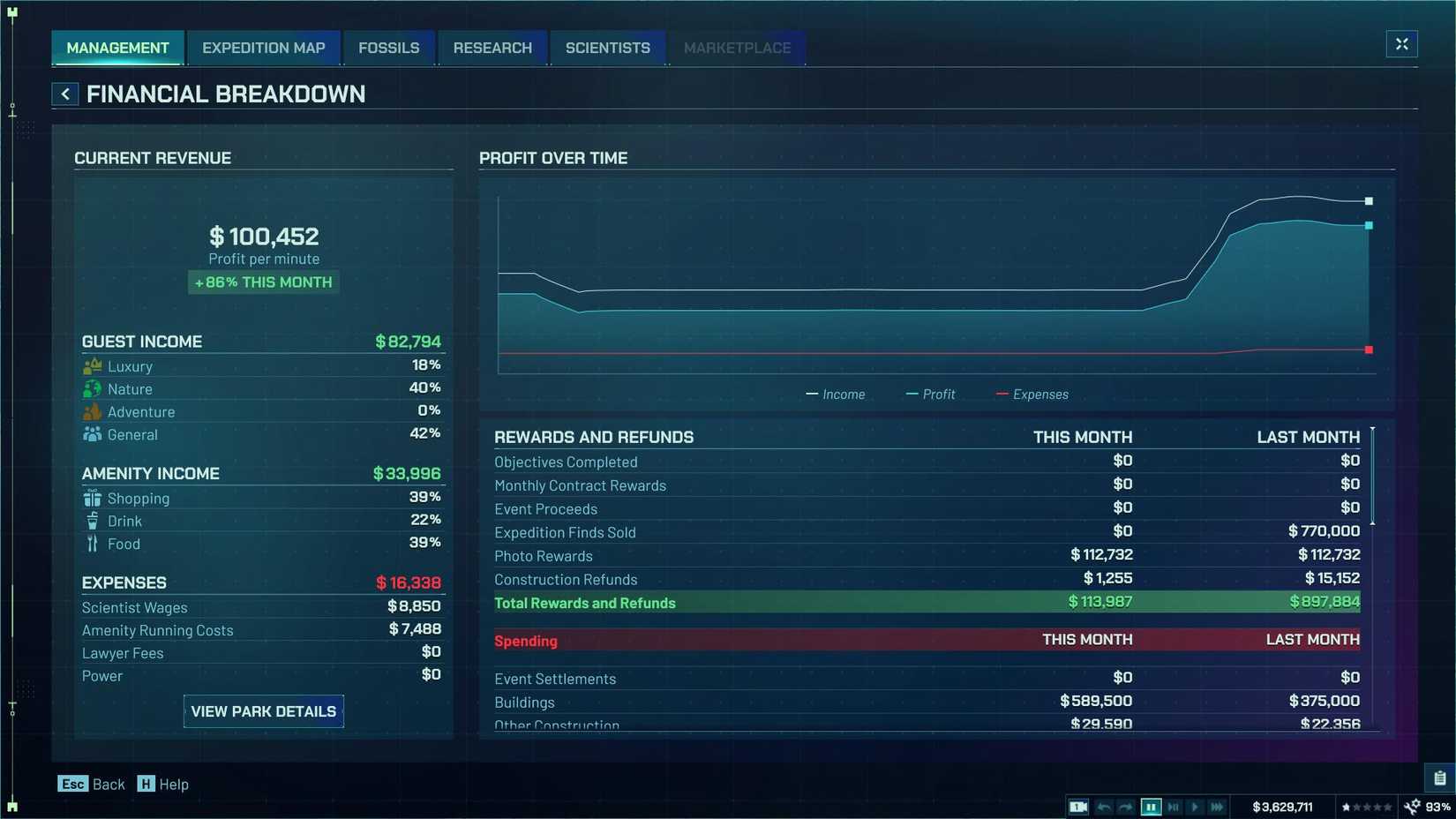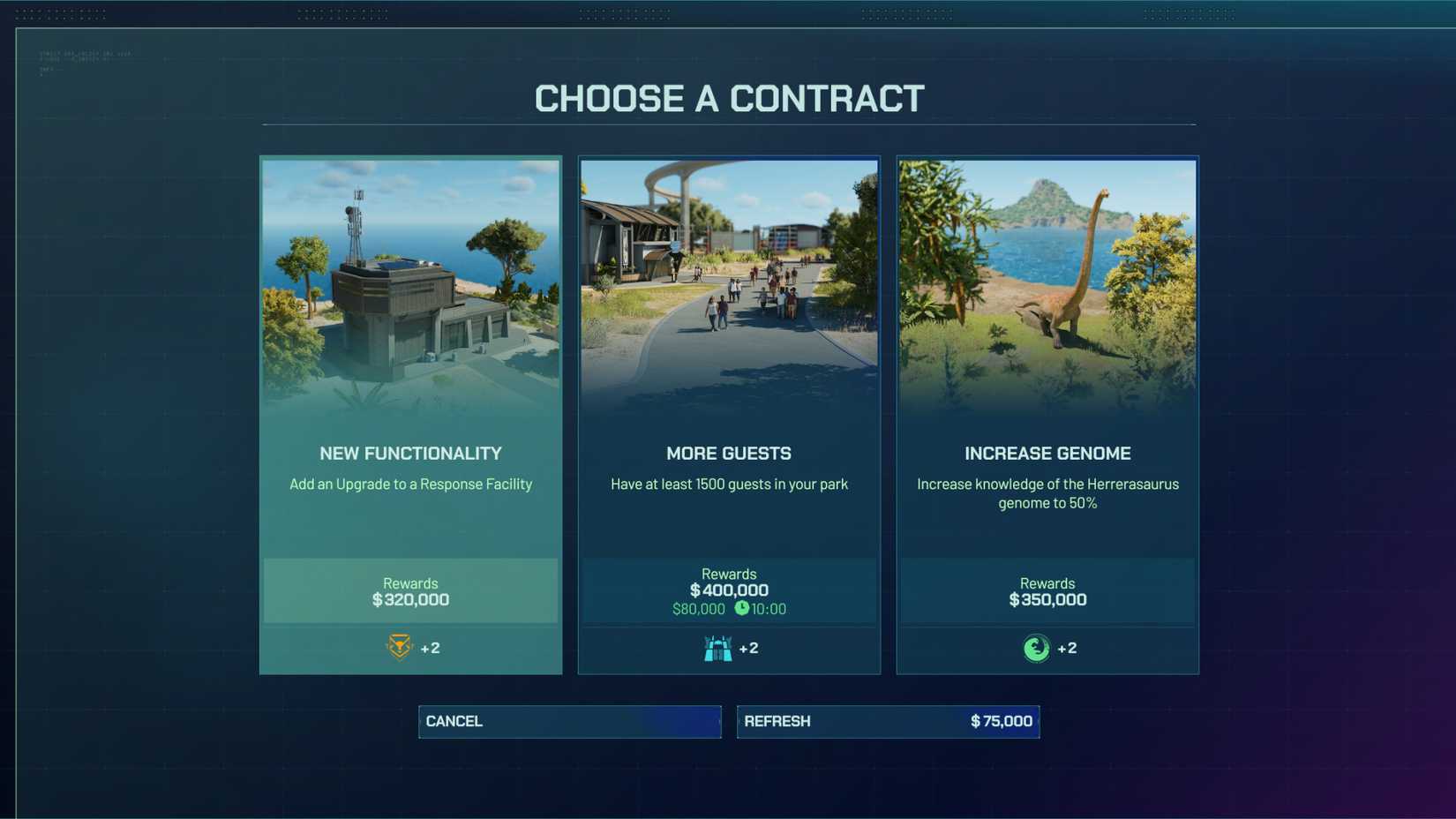The sequel to Jurassic World Evolution 2, Jurassic World Evolution 3, is finally here, and it brings an entirely new breeding system and juvenile dinosaurs to the series. Apart from building, running, and expanding their own prehistoric park, players can now nurture generations of dinosaurs and observe new family dynamics and behaviors. Whether you’re a returning player or brand new to the series, this guide will walk you through the best beginner tips to help you build a park that’s both safe and spectacular in Jurassic World Evolution 3.
Build Smarter With Blueprints
If you’re someone who just wants to hit the ground running, use blueprints. These are pre-designed park layouts that let you skip the tedious groundwork and instantly place functioning facilities. You’ll find plenty of options already available with the help of Frontier Workshop.
The Frontier Workshop is packed with community creations that you can download and tweak to your liking. It’s a great way to learn from other players’ designs and speed up your own building process. Once you’re more comfortable, you can start creating your own blueprints to share with the community, helping other managers along the way.
Choose the Right Dinosaurs Early On
One of the most common beginner mistakes is rushing to add the most famous dinosaurs, like the Indoraptor or T-Rex, right away. While these dinosaurs are pretty exciting to play with, they’re also expensive and high-maintenance. Early in the game, your goal should be to build appeal without going bankrupt.
This is where Microceratus comes in. This tiny herbivore is one of the most cost-effective dinosaurs in the entire game. It costs only $24,000 and comes with 28 appeal. For comparison, the Indoraptor costs $1,355,000 and has 1,582 appeal.
The Microceratus also has a security risk of 1, meaning it almost never escapes, eats very little, and thrives in small enclosures. You can pack many of them together in a single exhibit to boost your appeal massively.
Customize Your Park
For players who love complete creative freedom, Jurassic World Evolution 3’s building tools are a dream come true. The Custom Design system lets you build your park from the ground up using blank core modules. From there, you can add all the necessary buildings and enclosures exactly where you want them. You can mix, match, and experiment freely to create an entirely unique park.
Stop Dinosaurs From Escaping
Escaped dinosaurs are not good for your park’s appeal. The simplest way to prevent escapes is to match the rating of the fence to your dinosaur’s threat level. For instance, if a dinosaur has a security rating of 1, a fence rated 2 is more than enough. On the contrary, if you put a dinosaur with a rating of 3 inside a fence rated 2, it will run away.
However, one thing to be aware of is that if a dinosaur is unhappy in any way, they will get upset, and they might try and break out. Make sure every species has its preferred food, comfort, and terrain.
When dinosaurs start showing red icons above their heads, it’s a warning that they’re stressed or unsatisfied and could soon start attacking fences. Keep them comfortable, and they’ll stay calm.
Design Scenic and Comfortable Dinosaur Habitats
A visually appealing park not only impresses your guests, it keeps your dinosaurs happier too. You can use the Terrain tool to move mountains, which form natural boundaries for your dinosaur enclosures.
Similarly, you can use the Water brush to create waterfalls for forming scenic boundaries between enclosures, reducing the need for endless fencing. Dinosaurs also prefer varied terrain, so blending open fields, forests, and small water bodies creates a more natural habitat and improves their comfort levels in Jurassic World Evolution 3.
Delegate Tasks to Your Staff
Running a park means constantly juggling maintenance, medical emergencies, and security concerns. Instead of trying to handle everything yourself, delegate some tasks to your staff. Build essential facilities like Paleo-Medical, Maintenance, and Response Units early on to keep your park operating efficiently behind the scenes.
Make sure each team has the fuel, tools, and resources they need to stay on top of their duties. Once properly equipped, they can automatically respond to emergencies such as dinosaur escapes, fence damage, or illness outbreaks. In the long run, this saves you time and prevents disasters before they spiral out of control.
Group And Mix Dinosaurs Strategically
Another great tip for boosting your park’s overall appeal without draining your budget is to group dinosaurs that can work together. Herbivores like the Microceratus and Struthiomimus are perfect for this strategy. Both of these are affordable, peaceful, and can happily share the same enclosure.
The Microceratus costs just $24,000 and the Struthiomimus even less at $15,000, yet together they create a lively, active exhibit that keeps guests entertained and your appeal rating high. Once your park is financially stable, and you’re ready for more excitement, you can add a small carnivore in a separate enclosure. It’s one of the most cost-effective predators you can get early on.
If you want extra safety, you can try double-fencing high-risk enclosures. It may look a bit artificial, but it’s great for containing aggressive species. If you prefer a more natural look, you can use rocks and scenery to form natural barriers.
Raise Your Income
The quickest way to raise your income in Jurassic World Evolution 3 is by using amenities. Shops, restaurants, and drink stands all generate income.
First, open the Change Product menu and pick the offerings that will make your guests happiest. Then, jump over to Change Features and fine-tune things until you hit that perfect 100% guest satisfaction. Once you do, your profits will skyrocket. Repeat this process for every single shop and facility in your park. It’s a simple yet powerful trick to keep your park financially secure.
Take Advantage of Contracts
Another quick and simple way to make money is to use Contracts. Contracts give you money in return for achieving a small or a quick objective. For example, you might get a contract to build a medium amenity for $250,000. Since the building only costs $50,000, that’s a $200,000 profit plus a free amenity.
You can also get contracts for upgrading power stations or facilities. These are especially profitable since they often pay out more than the cost of the upgrade itself. If you don’t like your current contracts, just wait as they refresh automatically. Avoid buying new ones unless you’re really desperate.

- Released
-
October 21, 2025
- ESRB
-
Teen / Blood, Crude Humor, Violence

